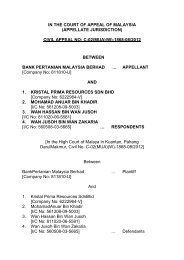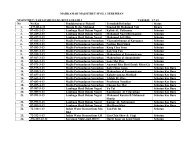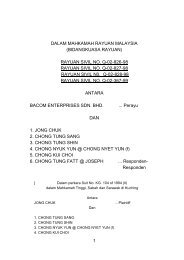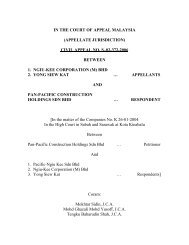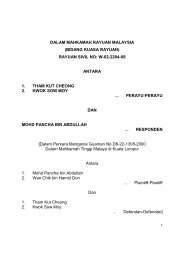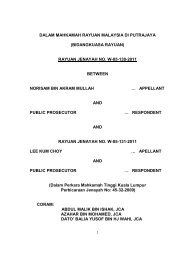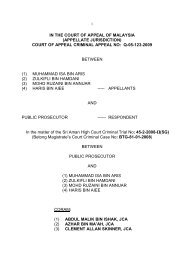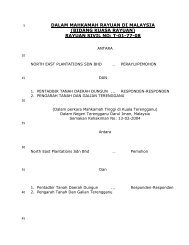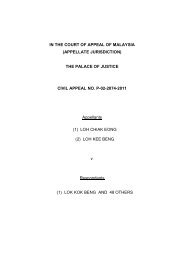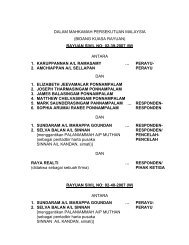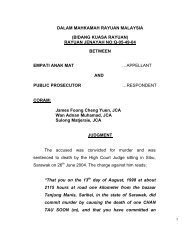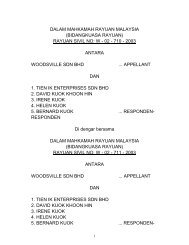rayuan jenayah no. b-05-18-2009 antara faisal bin abd. aziz
rayuan jenayah no. b-05-18-2009 antara faisal bin abd. aziz
rayuan jenayah no. b-05-18-2009 antara faisal bin abd. aziz
You also want an ePaper? Increase the reach of your titles
YUMPU automatically turns print PDFs into web optimized ePapers that Google loves.
(c) On the last issue of information under Section 27 of the<br />
Evidence Act, that section reads as follows:-<br />
“27. (1) When any fact is deposed to as<br />
discovered in consequence of information received<br />
from a person accused of any offence in the custody<br />
of a police officer, so much of that information,<br />
whether the information amounts to a confession or<br />
<strong>no</strong>t, as relates distinctly to the fact thereby discovered<br />
may be proved.”.<br />
It is trite law that Section 27 of the Act is to be read<br />
independently from the provisions pertaining to<br />
confession under Section 24 of the Act. Reference on<br />
this matter can be seen in the cases of: Gooi Ching Ang<br />
v PP [1999] 1 CLJ 829; Hanafi <strong>bin</strong> Mat Hassan v PP<br />
[2006] 4 MLJ 134; and Francis Antonysamy v PP<br />
[20<strong>05</strong>] 2 CLJ 481.<br />
Furthermore in this instant appeal, the information<br />
was given in the hearing of SP2, who as discussed<br />
earlier, was an agent provocateur and thus protected<br />
under Section 40A(2) of the Dangerous Drugs Act<br />
1952, which under the law makes the information<br />
admissible as evidence at the trial. There are <strong>no</strong> two<br />
ways about that.<br />
Furthermore, the rationale of the admissibility of<br />
information under Section 27 is because the fact of<br />
14



